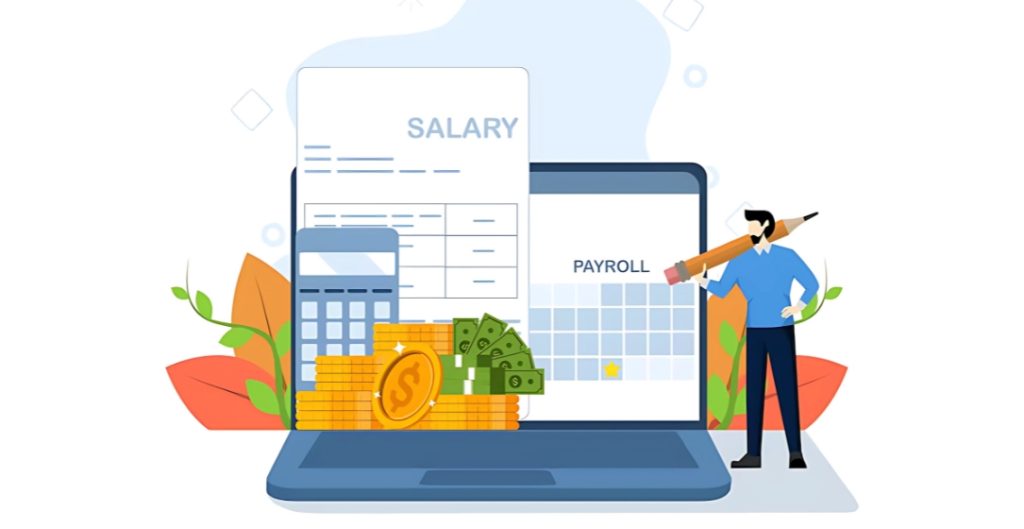
Table of Contents
Introduction
Let’s be honest. When managing payroll is all manual, it becomes a Herculean task. Calculating salaries, ensuring tax compliance, processing leaves—you name it! And this is when sometimes the HR teams feel that their backs are up against a wall. Here comes an instance where payroll software can come to your rescue.
Payroll software is essentially a computer program that automates all levels of payroll processing. This, however, is no longer just the concern of larger corporations. Today, startups, SMEs, accountants, and HR professionals from varied industries are angling for payroll solutions to facilitate their work to run more smoothly and accurately.
This blog will introduce you to the working of a payroll software, prepping you on why you really need one, and what to check for while considering a switch. And believe me, your future self will thank you for it.
What Is Payroll Software?
In plain English, payroll software is a digital platform that helps businesses calculate and disburse employee salaries. It takes care of deductions, taxes, and compliance — all while keeping records squeaky clean.
Back in the day, payroll was a paper-heavy, manual nightmare. Spreadsheets, calculators, ledgers — it was messy and prone to errors. Thankfully, digital solutions have evolved.
Today, you’ll find two common types:
- Cloud-based payroll software: Accessible anywhere, anytime. Ideal for remote teams or businesses on the go.
- On-premise software: Installed directly on company computers. It’s more traditional but sometimes preferred for tighter security control.

Why Do Businesses Need Payroll Software?
You might wonder, “Do I really need another tool?” Well, here is why the answer probably has to be yes:
1. Time Saver and Reduction of Human Errors
The automation of payroll greatly reduces the hours spent doing repeated calculations or double-checking the numbers. A human being, after all, may make mistakes; software, well, unfortunately no (if properly configured).
2. Ensures Compliance with Tax and Labor Laws
Tax laws are not just complicated; they change from time to time. A good payroll software sneaks behind and keeps you in compliance, keeping away costly penalties from you.
3. Increases Accuracy of Payslip and Deduction
No one wants to know why someone’s paycheck is underpaid or overpaid by a hundred bucks. Payroll software makes logical calculations from every point: bonus, deduction, etc.
4. For Growing and Remote Teams
As your business grows, so does the team. Manual systems would crack. Payroll software scales smoothly and accommodates different pay structures and regions.
Key Features of Good Payroll Software
A good payroll software should be one that is far more advanced than simply giving orders. Some must-have features in good payroll software are:
- Auto-calculation of Salaries: Payroll done quickly and without headache.
- Tax and Statutory Compliance: Handle PF, ESI, TDS, and other local regulations.
- Payslip Generation and Delivery: Payslips delivered digitally direct to employees.
- Integration with Attendance and Leave Tracking: So you aren’t manually adjusting pay every month.
- Employee Self-Service Portals: Allows employees to view payslips, request leaves, and much more.
- Support of Direct Bank Transfer: No more cheques; payment is made straight to the account.
- Reporting and Analytics Dashboard: Helpful monitors for management and audits.
Advantages of Payroll Software
Still having doubts? This list may sell you on it:
1. Productivity for HR Increased
When payroll systems operate on their own, HR can actually focus on matters relating to people.
2. Payment on Time = Happy Employees
Salary delays eat away at people’s morale. And payroll software is there to keep things punctual and professional.
3. Audit-Ready Records and Transparency
Honestly-maintained records make auditors’ work easy and also create trust in the minds of employees and regulators.
4. Scale with Business Growth
Whether you are 10 or 1,000 strong, a good system grows with you.
5. Updates data to be secure
Salary data of utmost secrecy needs to be protected. Most platforms use encryption on their servers and secured access to keep them firm.
Payroll Software Use Cases by Company Size
1. Small Business
Their strong points become accessibility and cost; online-based systems are especially helpful where there is no HR team.
2. Medium Companies
Here, integrations to existing HR systems become important by automating the onboarding process collecting information for payroll and leave of absence processing.
3. Enterprise
For large companies, these issues revolve around compliance tools, multi-location systems, and more customization.
Payroll System Problems
Payroll software is not just to be more efficient — it facilitates clearing up some nasty headaches:
- Late or Incorrect pay: Automated workflows ensure timely and accurate recording of payroll tasks
- Miscalculating taxes and/or employee/employer benefits: Automatic updates of tax modules allow for correct deductions to be used so there is not over or under payment.
- Manually recording documentation: Everything is tracked digitally and in real time.
- Inconsistent processing of leaves of absence or salary changes: Integrated with a leave tracker ensures the pay process aligns to attendance patterns.
How to Pick the Right Payroll Software
Since not all payroll tools are created equal, here’s how to pick the right tool for you:
- Determine your HR aspirations: Are you seeking automation from a payroll service, compliance, or employee engagement?
- Compare features and prices: Do not let flashy features blow your mind — determine what features are important, and concentrate on them.
- Look for integrations: Particularly with your HR or accounting software already in place.
- Assess the ease of use: Your team should not need a technology degree to run payroll.
- Consider support and scalability: Look for a vendor with great reviews and good support when the system is not always responsive.
You can browse for payroll solutions that offer all of this under one roof — VOffice Desk, for example, provides extensively powerful as well as user-friendly HR and payroll tools for modern businesses.
Upcoming Trends in Payroll Technology
Where’s payroll technology headed? Frankly, it’s pretty cool!
- AI-Powered Payroll Forecasting: Predict staffing costs and catch anomalies before they turn into problems.
- Integrated to Wellness Tools: Financial health to engagement scores.
- Blockchain Powered Pay Records: Peace of mind through transparent, tamper-proof records.
- Personalized Payroll Experiences: Salary bonuses on your birthday or nudges based on performance — it’ll be automatic.
To learn more about how modern payroll systems have evolved, explore Gusto’s comprehensive payroll features, which have smart capabilities and really matter in today’s business landscape..
Why VOffice Desk Is the Smart Choice for Payroll & HR
If you want a payroll solution with all the bells and whistles, without a million moving parts, VOffice Desk is the payroll partner for you. It is payroll software combined with HR automation, attendance tracking, and employee engagement all in a simple interface.
Here is what you will enjoy:
- Automated salary processing with real-time attendance sync
- Built-in compliance updates (so you’ll never miss a tax update)
- A self-service portal for employees to download payslips, request leave, or see balances
- A scalable solution whether your company is 5 or 500
And, their support team actually listens, which is unusual and incredibly helpful.
VOffice Desk is not just payroll software, it is a means for businesses to develop smoother workflows and happier teams.
Conclusion
Payroll software is no longer something you merely want — it’s something you need. It does not matter if you have a startup or you’re a growing organization preparing to enter new geographies and territories; the right tool can change payroll from something to be dreaded each month to a smooth process.
Payroll software reduces the time it takes, increases accuracy, develops trust with employees, and allows your HR department to concentrate on strategy rather than paper-based process. So if you are still using a spreadsheet and you really dread the 1st or 15th each month, it may be a good time to make a change.
So go try things out, explore and don’t forget to check out VOffice Desk — it might be just what your business is looking for.
Because you have better things to do than go chasing payslip errors, right?

